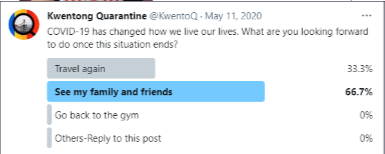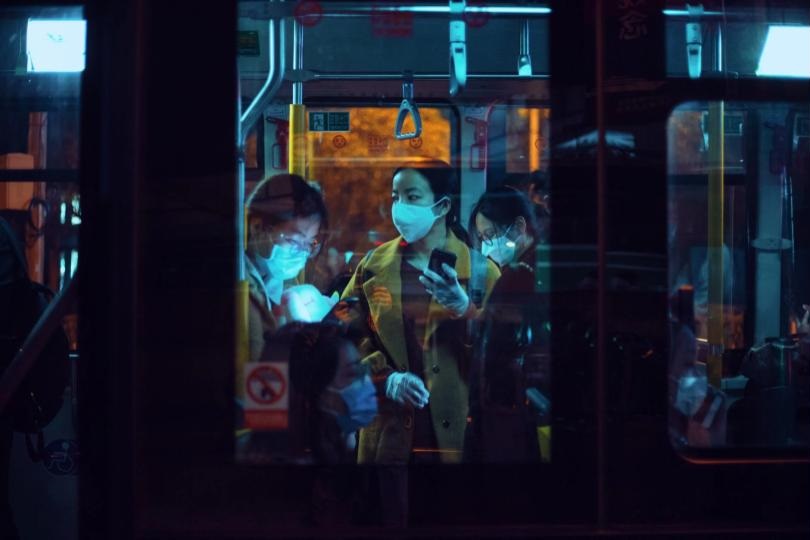Insights from the article:
- The pandemic narrative shows a hopeful tone among Filipinos and this is shown through the many user-generated posts at the start of the lockdowns;
- Self-care, health and wellness, and strengthened familial partnerships are all common themes from social media posts at the height of restrictions;
- Because of the restrictions and the sudden immobility, Filipinos also share a lot of negativity about their condition, and as ethical marketers we do not want to add fuel to these narratives but instead offer a more hopeful message.
Disclaimer: This blog includes 3 parts of a 5-part, 1.5-hour seminar I delivered for a private corporation a few months back, about the intricacies of communicating in the new normal, the COVID-19 Narrative, the different sensitivities we have to observe in our digital communications, and how the New Consumer is born out of this pandemic. My client agreed to allow me to use parts of the seminar content for this blog.
What has been your COVID-19 experience like?
I’m sure we all have had our ups and downs during one of the longest lockdowns in the world we are experiencing here in the Philippines. I wanted to ask this because each of all our own experiences differ in one way or another. The personal, work-related, family, and financial aspects of our lives have definitely been affected by the pandemic, and each of us have different stories.
My point is that while all our stories are different, the COVID-19 Narrative shows clear similarities and commonalities that we all can learn lessons from, in a communications perspective.

Consider the Twitter project @KwentoQ. A few months after the lockdown was imposed in the Philippines in 2020, Johns Hopkins Center for Communication Programs in Manila launched KwentoQ (@KwentoQ). This is an initiative to connect human experiences through bite-sized stories about how people are coping and to build a sense of community.
By scouring their posts, I have found these similar themes in their user submissions:
- Self-care has been a resounding mantra among social media stories, and a lot of renowned personalities and health-centric communities highlighted the importance of fulfilling our personal wants and needs.
- Digital media consumption has reached an all-time high. According to the latest WeAreSocial and Hootsuite study, 99.4% of Filipino internet users watch online videos, 83% watch vlogs, and 82.2% listen to online streaming services.
- We have also seen a rise in health and wellness trends, as well as brands in these spaces taking their flagship messaging of self-care to the frontlines. Positivity amidst the negativity has also been loud and clear among brands who are making it big in social media.
- Because families are stuck at home for months on end, we needed to come up with different ways on how to bond. We needed to find more ways on how to keep ourselves entertained, and to stay connected with our loved ones – whether they are with us at home or not.
But, we must not forget that these stories came about to combat the growing negativity of being locked down and the healthcare crisis that continues to bear down on us. The highlight of the COVID-19 Narrative is that the positive stories we publish and share online are our tools to combat the overbearing negativity that surrounds us.

The longest lockdown has brought upon loneliness, anxiety, stress and a lot of uncertainty for everyone. We needed to cope, and we needed to purposely highlight the positive amidst the anxiety, stress, helplessness and uncertainty in order to do so.
The COVID-19 Narrative tells us that there is a paradox of feelings. That there is a wide range of positivity that we can ride on, and negativity that we need to be wary of. As communicators, we must stay within the bounds of what is responsible, sensitive, and ethical amidst the ever-growing negativity. We don’t want to add more fuel to this growing fire.
When Communicating in the New Normal, Be Aware of The New Consumer
The pandemic has changed our preferences and behaviors. Because we now prioritize different things, especially the health and safety of our loved ones, The New Consumer was born.
- Attitudes Shape Spending. This has been a sales and marketing concept even before the pandemic, but because our behaviors and priorities have changed, so does The New Consumer’s spending habits. This consumer’s search for value for money is much more than just seeking for a short-term benefit, but brought upon by a fundamental change in purchase priorities and will likely be prevalent for the years to come.
- Trust-Seeking. Again, not a new concept. But the direction of how our priorities have changed also shifted how brands should now gain the trust of The New Consumer. Trust among consumers and brands is not a new concept, but because of these turbulent times, The New Consumer seeks brands that put the well-being of their customers and employees ahead of profit.
- Digital-Savvy (Now More Than Ever). Digital media consumption and Filipino’s preference towards digital media has been growing throughout the past years, but the pandemic highlighted the need to shift preferences towards digital access to their needs.The majority of customers are now comfortable using online channels, reducing physical purchase occasions and are gravitating towards touchless shopping and contactless payments. Ease, therefore, is at the heart of a digital shift, which touches all parts of society irrespective of age.
Digital-savviness is at the core of how The New Consumer prefers to interact with brands. I gathered these snippets of insights from We Are Social’s Digital 2021 Report about the digital-savviness of Filipinos during the New Normal:
- Mobile-first, and prefers video more than other forms of content;
- Uses social media more than ever, especially Facebook, Youtube, and Messenger;
- Has shifted towards mobile wallet and mobile-enabled payments, and generally increased their online purchase activity; and
- Actively seeks brands and products/services via social media and search engines.
How Do We Then Begin Communicating in The New Normal?
The stories and trends we have presented earlier show 4 common factors that we need to consider in our digital marketing messaging.

Build Trust.
We build trust through transparency and honesty. Our brand has to be seen as a brand that people can trust, and we can do this by following Simon Sinek’s 3-step advice on how to inspire action:
- ‘What’? What is it that you and your company make?
- ‘How’? How is your product or service made?
- ‘Why’? Why are you and your company making this? Is this a purely profit-driven enterprise? Are you taking advantage of market inefficiency? Do you have a purpose, ideology, cause or belief?
When an organization has a sense of purpose, it has a role to play in society. It becomes a socially-responsible entity, whose values and contributions are aligned towards the greater good. Brands need to transcend from being a benefit-driven company to a purpose-driven, socially-responsible brand.

Empathy vs. Anxiety and Uncertainty.
Empathy is not just a content marketing tactic – it’s a business philosophy that has brand marketing benefits.
We can continuously talk about our internal efforts so that we are seen as a company that cares for its customers and its people and stakeholders.
More than that, we should not invest on messaging that scare people by using their triggers of stress and anxiety (e.g. stuck at home, disconnected with loved ones, uncertainty of next paycheck), and instead focus on the positive stories of success.
While this may be so, we also should not sound as if everything can and is back to the “old normal”. We must acknowledge that this pandemic created a great shift in how we do everything and what we care about, and become a partner to our consumers in becoming secure and protected.
Maintaining an open line of communication with our consumers and customers is also important in reducing anxiety and uncertainty. It should be that whenever they need us, we’re there.
Immediate customer support that do not just answer questions but also provides proactive solutions, helps solve our consumers and customers’ challenges, alleviating anxiety and uncertainty.
Optimize for Digital.
The New Consumer is digital-savvy – now more than ever.
Therefore, we should focus on channels that connect with users directly through their mobile devices – social media, emails, and websites. We must also focus on calls-to-action that do not require the user to switch devices (e.g linking posts to non-mobile optimized websites, and submitting printed scanned forms)
Family-First.
In planning our content marketing calendars, we must prioritize topics, products and services that are relevant to what our consumers need right now.
Moreover, we must continuously promote strong familial bonds, connecting with loved ones, and becoming a partner for Filipino families in protecting their needs and welfare.
Share Your Own COVID-19 Narrative
So, what was your COVID-19 story like? If you have suggestions, questions, reactions and stories you would like to share with me, feel free to contact me here.


1 comment